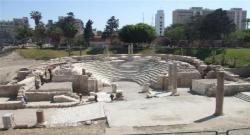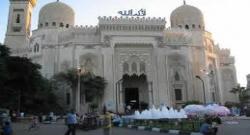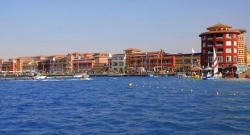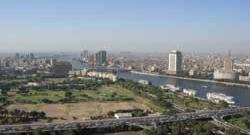About Egypt : Optional Tours : Alexandria
The Greco-Roman Museum was founded in 1892, and has celebrated its centenary, Its vast collection, gathered over the years. The Museum consists of 27 halls, and contains a very big variety of coins from different countries, hundreds of precious antiques, statues of Graeco-Roman period and show pieces of a shrine in the Fayoum dedicated to the Pnepheros the Crocodile God, a hall devoted to mummies, pottery, coloured glassware, and magnificent collection of metal, silver and gold. It is an excellent introduction to the Greek and Roman art and history in Egypt. The Roman Theatre a well preserved theatre with marble seats for up to 800 spectators, galleries and sections of mosaic-flooring. The Roman theatre was built in the 4th century AD, it remained in use till the 7th century AD. It was discovered during the 1960s.
Greco Roman Museum and Roman Theatre (ALX/01)
Half day

Pompey Pillar and the Catacombs of Kom El Shoukafa (ALX/02)
Half day

Fort Quaitbay, the Royal Jewellery Museum, Sidi Aboul Abbas Mosque (ALX/03)
Half day

Al Alamein (ALX/04)
Full day

Cairo (ALX/05)
Full day/Overnight










